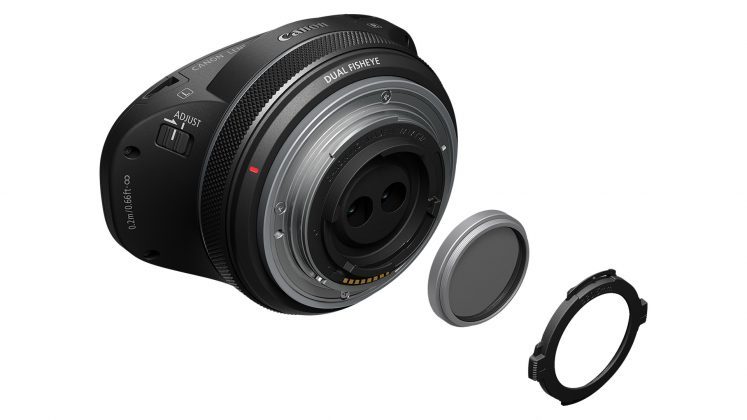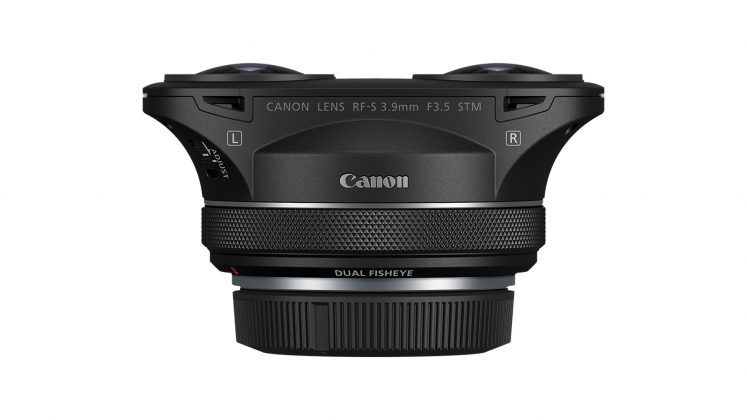Leading camera maker Canon today announced its next big entry into its dual-optic lens category, which allows its line of high-end EOS R7 cameras to take spatial video and photos.
Called the RF-S3.9mm F3.5 STM Dual Fisheye lens, Canon says its more affordable VR lens system is engineered to offer “a perfect balance between clarity and usability for vlog-style VR creation.”
The new Dual Fisheye lens seems to be mostly the same idea and execution as the previous model introduced in 2021, however features slightly lower specs, including a smaller field-of-view and aperture, but offered at a greatly reduced cost.
To boot, the new lens system is scheduled to be available sometime this month for $1,099.00, or about half the price of the lens initially announced for its EOS VR System from 2021.
“This APS-C Stereoscopic VR lens’ ability to achieve a 144º wide-angle view and utilize equidistant projection makes it ideally suited for every day, virtually hassle-free VR production,” Canon says in a press statement. “Also designed for versatility, this lens permits multiple methods of camera handling, from hand-holding, mounting on a gimbal, or tripod-mounting.”
Notably, the new stereoscopic lens features an interpupillary distance (IPD) of 60mm, which is very near to an average human IPD, making captured content more realistic when played back the the user.
Check out the full specs below:
| Focal Length | 3.9mm |
| Maximum and Minimum Aperture |
f/3.5 – f/16 (1/3 stops, 1/2 stops)
|
| Lens Mount Type |
Canon RF Mount; Metal Mount
|
| Interpupillary Distance / Baseline Length | 60mm |
| Minimum Focusing Distance |
0.66 ft. (7.9 in.) / 0.2 m
|
| Maximum Magnification | 0.03x |
| Angle of View (Diagonal) | 144° 00′ |
| Lens Construction (each lens) |
11 elements in 8 groups
|
| Special Elements (each lens) |
Two UD glass elements
|
| Lens Coating |
Canon ASC (Air Sphere Coating)
|
| Filter Size Diameter (rear lens mount) |
30.5mm screw-type filter
|
| Rear Mounted Gelatin Filter Holder |
Supported – Built-in Supports cut gel or polyester
|
| Aperture Blades (each lens) | 7 |
| Lens Switches | None |
| Dust/Water Resistance | Not Provided |
| Focusing System |
Gear type STM focusing
|
| Left/right focus difference adjustment |
User-adjustable, via adjustment mode switch
|
| Dual Pixel CMOS AF | Supported |
| Focus Guide | Not Supported |
| Full-time Manual Focusing | Supported |
| Control Ring | Supported |
| IS Mode Selection | Not Supported |
| Optical Image Stabilization | Not Supported |
| Stabilization with in-body IS (EOS R7) | Not Supported |
| Dimensions (width x height x length) |
4.4 x 3.3 x 2.1 in. (112.0 x 83.7 x 54.6mm)
|
| Weight |
Approx. 10.2 oz. (290g)
|












